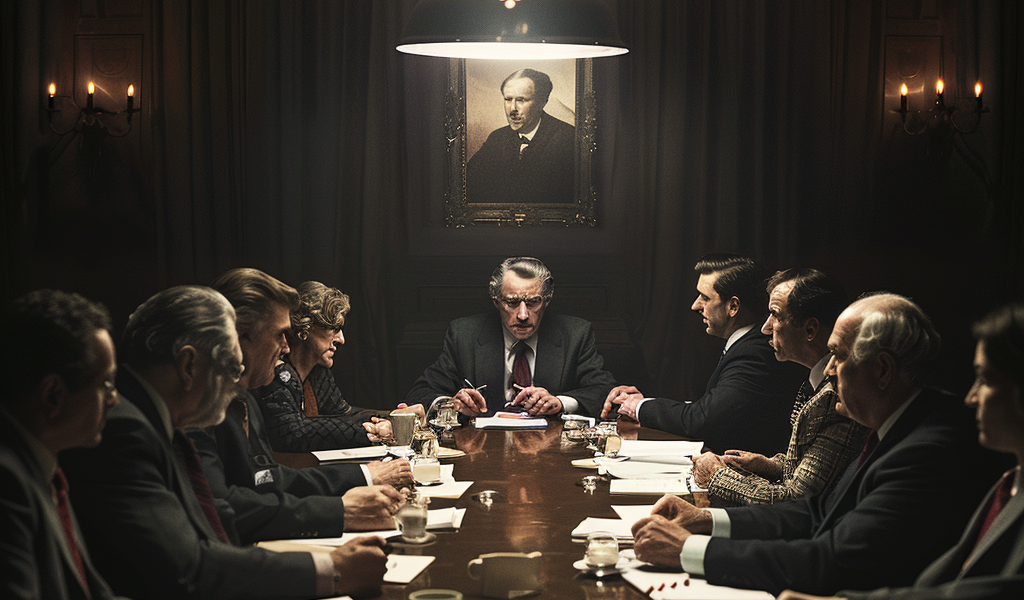In a striking comparison, acclaimed filmmaker Armando Iannucci has drawn parallels between the political landscape of the United States and his satirical film, “The Death of Stalin.” This comes in light of President Joe Biden’s recent decision to withdraw from the 2024 presidential race, a move that has sparked discussions across the political spectrum.
Released in 2017, “The Death of Stalin” quickly gained recognition as a sharp political satire, reflecting the absurdities and complexities of government. The film, based on the French graphic novel “La Mort de Staline,” humorously portrays the chaotic power struggle following the death of Soviet leader Joseph Stalin in 1953. With an impressive ensemble cast featuring actors such as Steve Buscemi and Michael Palin, the film combines humor with a dark examination of political maneuvering.
In a recent interview with Politico’s West Wing Playbook newsletter, Iannucci reflected on the renewed relevance of his film in the context of Biden’s political journey. He noted how the dynamics within the film resonate with the current political climate, particularly following Biden’s debate performance and the subsequent turmoil that ensued.
“The scene I always remember is that committee scene at the end of the film where they are all voting on what to do. And of course, no one wants to be the first person to put their hand up in case they’ve got it wrong and will be shot,” Iannucci remarked. He emphasized how this scenario mirrors the hesitance among Biden’s associates to openly discuss the president’s viability for another term. The filmmaker suggested that many were aware of the challenges Biden faced but were reluctant to voice their concerns.
Biden’s withdrawal from the race, coupled with his immediate endorsement of Vice President Kamala Harris, has been perceived as a significant political maneuver. While some observers had anticipated this decision following Biden’s performance against former President Trump, the timing and manner in which it unfolded have ignited discussions about the future of the Democratic Party.
As Biden steps aside, the endorsement of Harris marks a pivotal moment in the political landscape, potentially reshaping the Democratic strategy as the party prepares for the upcoming election cycle. Harris, who has been a prominent figure in Biden’s administration, is now positioned to carry forward the legacy of the current administration while navigating the complexities of a changing political environment.
Iannucci’s insights into the political sphere highlight the ongoing challenges faced by leaders in the U.S. today. The hesitance to confront uncomfortable truths within political circles is a theme that resonates with audiences, reflecting the broader issues of accountability and leadership in contemporary governance.
In the wake of Biden’s decision, the Democratic Party is now faced with the task of rallying support around Harris as she prepares to launch her campaign. The dynamics of the party’s base, the influence of progressive movements, and the need to appeal to a diverse electorate will be crucial factors in shaping the party’s strategy moving forward.
As the political landscape continues to evolve, the lessons drawn from Iannucci’s work remain pertinent. The interplay of humor and tragedy in “The Death of Stalin” serves as a reminder of the complexities inherent in governance and the often absurd nature of political power struggles.
Looking ahead, the Democratic Party’s ability to unify and present a compelling vision for the future will be essential as they navigate the challenges posed by a divided electorate and the looming presence of Republican opposition. The stakes are high, and the eyes of the nation will be on Harris as she embarks on this new chapter in her political career.
Ultimately, the intersection of art and politics continues to provide a lens through which we can examine the state of leadership and the often chaotic nature of decision-making in the highest echelons of government. Iannucci’s work serves as both a cautionary tale and a source of reflection as the U.S. braces for the next phase of its political journey.





